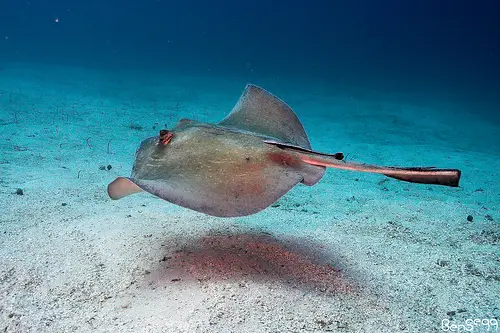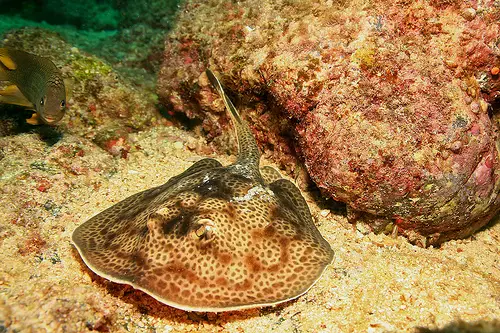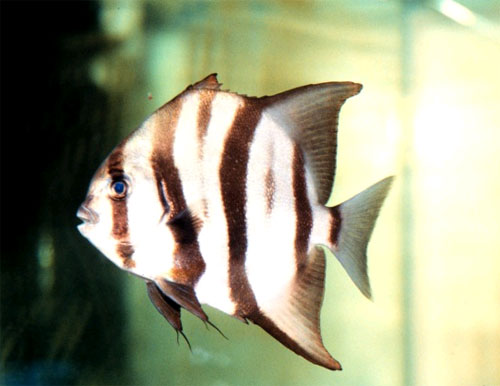Stingrays
One of the most unique sea creatures in the world is the stingray. Stingrays can be easily identified as animals that look like a flat shark but with a whip-like tail. They are commonly found in the shallow coastal marine waters of warmer temperate seas throughout the world. Stingrays spend most of their time slumbering while partially covering up in sand. When they are moving about in the water, most stingrays swim by waving their trunks like a wave; while others swing their sides like wings. They also use their tail to move in the water, however the primary purpose of it is for protection.
The stingray derived its name after the barbed stinger on their tail that is used exclusively for self-defense purposes. The spine may reach a length of approximately 35cm and is covered with a thin layer of skin which is like a membrane sheath. It can be threatening with serrated edges and a sharp point that may produce venom, which can be harmful to humans and even remain poisonous even after the stingray’s death. An example of this is that a stingray killed the famous Australian TV and nature lover, Steve Irwin (RIP) with its tail.
The stingray’s skin color commonly reflects its effectiveness to conceal itself under water, which helps to protect themselves from omnivorous sharks and larger rays. Their flattened bodies are inclusive of its fins that are joined to their head and its spooky tail tags along behind. Because the stingray’s eyes peer out from the top of its bodies, and its mouth, nostrils, and gill slits are on the undersides, causing it difficult to find it target of attack. Like its shark relatives, the stingray use smell and it outfitted with electrical sensors called ‘Ampullaceal of Lorenzini’. Stingrays mainly eat crustaceans, mollusks, and sometimes small fish as their food. Some stingrays have two powerful mouths with shell-crushing plates, while other rays only have sucking mouthparts. Most of rays have jaw teeth which enable them to crush shell such as clams, oysters, and mussels.
It is not likely for stingrays to attack humans but humans can get stung when a ray is accidentally stepped on. Stingrays are normally very tame and curious. Unlike sharks, their usual reaction is to swim away from any disturbance, but sometimes they may brush their fins over any new object they come across. To avoid stepping on stingray, we can shuffle or stamping one foot while walking through the shallow water. This action will cause stingrays to swim away. Nevertheless, some larger species could be more aggressive and should only be contacted with extra caution by humans, as the stingray’s defensive responses may result in serious injury or death. If humans get cut or stung from stingrays, it will cause local trauma, pain, swelling, and muscle cramps from the venom, and later possible infection from bacteria. Though the injury is painful, however it seldom causes life-threatening unless the stinger pierces a vital area and surgery may be required to remove the fragments.





i catched a fish its looks like a ray but it wasnt and it have spots on it and a tail and its white underneath????????????
I was bitten by a sting ray at the Dallas Aquarium petting tank today. It hurt quite a bit, broke the skin and left a big bruise. I was petting it’s back the way we’d been shown by the guide, then it swung up and CHOMP !
They failed to mention this as a possibility.